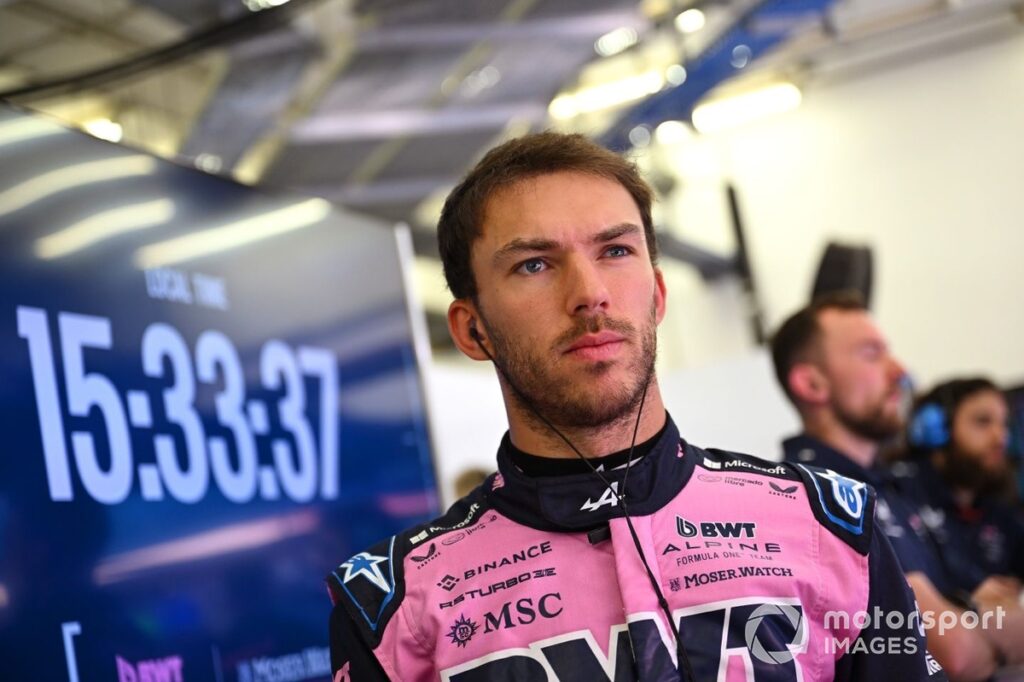Such are the political sensitivities embedded in the Alpine team’s Anglo-French make-up that the shortcomings in the engine bay represent a weakness that dare not speak its name.
“You know I can’t answer that question” was Pierre Gasly’s polite but firm reply in Jeddah when asked to account for how much of the difference in Alpine’s performance in Japan (where Gasly finished 13th) and Bahrain (where he was seventh) was down to car balance, and how much to power unit performance.
“The reality is this is the package we have and this package allowed us to fight for a good position in Bahrain. And I think this is what we need to build on. There are still areas where we can do better. There are things we can change, there are other things we can’t change.”
Gasly did concede that the Saudi Arabian street circuit is one on which Alpine might face a struggle. A picture is emerging from the races so far of the A525 is a relatively benign and well-balanced car, which thrives in flowing medium-speed areas but is held back by the power unit’s hybrid system running out of electrical charge on the straights.
At Suzuka, this manifested itself by Gasly being as quick as the frontrunners through the flowing ‘S’ curves at the beginning of the lap, then losing ground between the hairpin and ‘Spoon’ corner, then again on the run to 130R. By the same token, the long straights of the Shanghai circuit – where neither Alpine driver troubled the top 10 – brutally punished the car.
The Jeddah track has relatively few sections that are perfectly straight, but has a profusion of high-speed corners taken flat, or nearly flat. It also has relatively few hard stops, which has implications for the amount of electrical energy that can be harvested under braking – even more critical for Alpine given the Renault PU is known to be less efficient in this area than rivals.
Pierre Gasly, Alpine, Esteban Ocon, Haas F1 Team
Photo by: Clive Mason – Getty Images
“We know there are tracks where potentially things could be a bit more tricky and a bit more difficult for us,” said Gasly. “But then at the same time, we know what we fight with and this is what we’ve got.
“And we’ve got to go to fight with what we have. So yeah, I think on paper we know this track is quite sensitive to it [the limitation on electrical deployment]. But now it’s up to us to try to be as competitive as we can and, hopefully, we can still make something out of this weekend.”
The team is still digesting the lessons from a Bahrain weekend where the A525 was fast enough to qualify in the top 10 on a circuit where the abrasive track surface exerts a toll on the tyres and the efficiency of the underbody aerodynamics. Alpine had shown well at the pre-season test there – but other teams that had come away from the test in a positive frame of mind underperformed relative to their expectations last weekend, potentially as a result of the hotter ambient temperatures.
“In the winter test I think we saw the car was working well in Bahrain,” said Gasly.
“Obviously that was the only sample we had at the time so we thought we would be able to reproduce that sort of performance in the first few weekends, which wasn’t quite the same. It’s not like we were miles off – like in Australia we still managed to get to Q3, came short of it in Suzuka, but generally it didn’t feel quite as good.
“And then going back to Bahrain sort of put the car back to what I felt there. So, it’s more in terms of analysis, which obviously in a few days is quite difficult to get all these answers.
“But I think over the next few weeks before Miami, hopefully we can get a better understanding on why the car in these conditions worked the way it did and what somehow didn’t really favour us in the first few races.”
In this article
Stuart Codling
Formula 1
Pierre Gasly
Alpine
Be the first to know and subscribe for real-time news email updates on these topics
Subscribe to news alerts
Read the full article here

